Nineveh ( NIN-iv-ə; Akkadian: 𒌷𒉌𒉡𒀀, URUNI.NU.A, Ninua; Biblical Hebrew: נִינְוֵה, Nīnəwē; Arabic: نَيْنَوَىٰ, Naynawā; Syriac: ܢܝܼܢܘܹܐ, Nīnwē), also known in early modern times as Kouyunjik, was an ancient Assyrian city of Upper Mesopotamia, located in the modern-day city of Mosul in northern Iraq. It is located on the eastern bank of the Tigris River and was the capital and largest city of the Neo-Assyrian Empire, as well as the largest city in the world for several decades. Today, it is a common name for the half of Mosul that lies on the eastern bank of the Tigris, and the country's Nineveh Governorate takes its name from it.
It ...Read more
Nineveh ( NIN-iv-ə; Akkadian: 𒌷𒉌𒉡𒀀, URUNI.NU.A, Ninua; Biblical Hebrew: נִינְוֵה, Nīnəwē; Arabic: نَيْنَوَىٰ, Naynawā; Syriac: ܢܝܼܢܘܹܐ, Nīnwē), also known in early modern times as Kouyunjik, was an ancient Assyrian city of Upper Mesopotamia, located in the modern-day city of Mosul in northern Iraq. It is located on the eastern bank of the Tigris River and was the capital and largest city of the Neo-Assyrian Empire, as well as the largest city in the world for several decades. Today, it is a common name for the half of Mosul that lies on the eastern bank of the Tigris, and the country's Nineveh Governorate takes its name from it.
It was the largest city in the world for approximately fifty years until the year 612 BC when, after a bitter period of civil war in Assyria, it was sacked by a coalition of its former subject peoples including the Babylonians, Medes, Persians, Scythians and Cimmerians. The city was never again a political or administrative centre, but by Late Antiquity it was the seat of a Christian bishop. It declined relative to Mosul during the Middle Ages and was mostly abandoned by the 13th century AD.
Its ruins lie across the river from the historical city center of Mosul. The two main tells, or mound-ruins, within the walls are Tell Kuyunjiq and Tell Nabī Yūnus, site of a shrine to Jonah. (Jonah is considered a prophet who preached to Nineveh in Judaism, Christianity, and Islam, appearing in the Hebrew Bible and the Quran.) Large numbers of Assyrian sculptures and other artifacts have been excavated there, and are now located in museums around the world.
 Bronze head of an Akkadian ruler, discovered in Nineveh in 1931, presumably depicting Sargon of Akkad's son Manishtushu, c. 2270 BC, Iraq Museum. Rijksmuseum van Oudheden.[1]
Bronze head of an Akkadian ruler, discovered in Nineveh in 1931, presumably depicting Sargon of Akkad's son Manishtushu, c. 2270 BC, Iraq Museum. Rijksmuseum van Oudheden.[1]Nineveh was one of the oldest and greatest cities in antiquity. Texts from the Hellenistic period later offered an eponymous Ninus as the founder of Νίνου πόλις (Ninopolis), although there is no historical basis for this. Book of Genesis 10:11 says that Nimrod or Ashur, depending on the version, built Nineveh. The context of Nineveh was as one of many centers within the regional development of Upper Mesopotamia. This area is defined as the plains which can support rain-fed agriculture. It exists as a narrow band from the Syrian coast to the Zagros mountains. It is bordered by deserts to the south and mountains to the north. The cultural practices, technology, and economy in this region were shared and they followed a similar trajectory out of the neolithic.
NeolithicCaves in the Zagros Mountains adjacent to the north side of the Nineveh Plains were used as PPNA settlements, most famously Shanidar Cave. Nineveh itself was founded as early as 6000 BC during the late Neolithic period. Deep sounding at Nineveh uncovered soil layers that have been dated to early in the era of the Hassuna archaeological culture.[2] The development and culture of Nineveh paralleled Tepe Gawra and Tell Arpachiyah a few kilometers to the northeast. Nineveh was a typical farming village in the Halaf Period.
ChalcolithicIn 5000 BC, Nineveh transitioned from a Halaf village to an Ubaid village. During the Late Chalcolithic period Nineveh was part one of the few Ubaid villages in Upper Mesopotamia which became a proto-city Ugarit, Brak, Hamoukar, Arbela, Alep, and regionally at Susa, Eridu, Nippur. During the period between 4500 and 4000 BC it grew to 40ha.
The greater Nineveh area is notable in the diffusion of metal technology across the near east as the first location outside of Anatolia to smelt copper. Tell Arpachiyah has the oldest copper smelting remains, and Tepe Gawa has the oldest metal work. The copper came from the mines at Ergani.
Early Bronze AgeNineveh became a trade colony of Uruk during the Uruk Expansion because of its location as the highest navigable point on the Tigris. It was contemporary and had a similar function to Habuba Kabira on the Euphrates. By 3000 BC, the Kish civilization had expanded into Nineveh. At this time, the main temple of Nineveh becomes known as Ishtar temple, re-dedicated to the Semite goddess Ishtar, in the form of Ishtar of Nineveh. Ishtar of Nineveh was conflated with Šauška from the Hurro-Urartian pantheon. This temple was called 'House of Exorcists' (Cuneiform: 𒂷𒈦𒈦 GA2.MAŠ.MAŠ; Sumerian: e2 mašmaš).[3][4] The context of the etymology surrounding the name is the Exorcist called a Mashmash in Sumerian, was a freelance magician who operated independent of the official priesthood, and was in part a medical professional via the act of expelling demons.
Ninevite 5 periodThe regional influence of Nineveh became particularly pronounced during the archaeological period known as Ninevite 5, or Ninevite V (2900–2600 BC). This period is defined primarily by the characteristic pottery that is found widely throughout Upper Mesopotamia.[5] Also, for the Upper Mesopotamian region, the Early Jezirah chronology has been developed by archaeologists. According to this regional chronology, 'Ninevite 5' is equivalent to the Early Jezirah I–II period.[6]
 Polychrome painted jar, geometric designs and animals, the so-called "Scarlet Ware". From Tell Abu Qasim at Hamrin Basin, Iraq. 2800-2600 BCE. Iraq Museum
Polychrome painted jar, geometric designs and animals, the so-called "Scarlet Ware". From Tell Abu Qasim at Hamrin Basin, Iraq. 2800-2600 BCE. Iraq MuseumNinevite 5 was preceded by the Late Uruk period. Ninevite 5 pottery is roughly contemporary to the Early Transcaucasian culture ware, and the Jemdet Nasr period ware.[5] Iraqi Scarlet Ware culture also belongs to this period; this colourful painted pottery is somewhat similar to Jemdet Nasr ware. Scarlet Ware was first documented in the Diyala River basin in Iraq. Later, it was also found in the nearby Hamrin Basin, and in Luristan. It is also contemporary with the Proto-Elamite period in Susa.
Styles related to Nineveh 5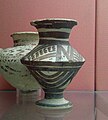
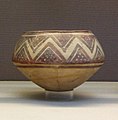



At this time, Nineveh was still an autonomous city-state. It was incorporated into the Akkadian Empire. The early city (and subsequent buildings) was constructed on a fault line and, consequently, suffered damage from a number of earthquakes. One such event destroyed the first temple of Ishtar, which was rebuilt in 2260 BC by the Akkadian king Manishtushu.
Ur III periodIn the final phase of the Early Bronze, Mesopotamia was dominated by the Ur III empire.
Middle BronzeAfter the fall of Ur in 2000 BC, with the transition into the Middle Bronze, Nineveh was absorbed into the rising power of Assyria.
Old Assyrian periodThe historic Nineveh is mentioned in the Old Assyrian Empire during the reign of Shamshi-Adad I (1809-1775) in about 1800 BC as a centre of worship of Ishtar, whose cult was responsible for the city's early importance.
Late Bronze Mitanni period Artist's impression of a hall in an Assyrian palace from The Monuments of Nineveh by Sir Austen Henry Layard, 1853
Artist's impression of a hall in an Assyrian palace from The Monuments of Nineveh by Sir Austen Henry Layard, 1853The goddess's statue was sent to Pharaoh Amenhotep III of Egypt in the 14th century BC, by orders of the king of Mitanni. The Assyrian city of Nineveh became one of Mitanni's vassals for half a century until the early 14th century BC.
Middle Assyrian periodThe Assyrian king Ashur-uballit I reclaimed it in 1365 BC while overthrowing the Mitanni Empire and creating the Middle Assyrian Empire (1365–1050 BC).[7]
There is a large body of evidence to show that Assyrian monarchs built extensively in Nineveh during the late 3rd and 2nd millenniums BC; it appears to have been originally an "Assyrian provincial town". Later monarchs whose inscriptions have appeared on the high city include the Middle Assyrian Empire kings Shalmaneser I (1274–1245 BC) and Tiglath-Pileser I (1114–1076 BC), both of whom were active builders in Assur (Ashur).
Iron Age Neo-AssyriansDuring the Neo-Assyrian Empire, particularly from the time of Ashurnasirpal II (ruled 883–859 BC) onward, there was considerable architectural expansion. Successive monarchs such as Tiglath-pileser III, Sargon II, Sennacherib, Esarhaddon, and Ashurbanipal maintained and founded new palaces, as well as temples to Sîn, Ashur, Nergal, Shamash, Ninurta, Ishtar, Tammuz, Nisroch and Nabu.
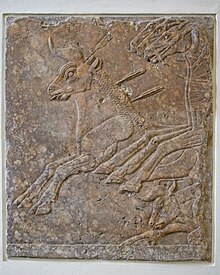 Refined low-relief section of a bull-hunt frieze from Nineveh, alabaster, c. 695 BC (Pergamon Museum, Berlin)
Refined low-relief section of a bull-hunt frieze from Nineveh, alabaster, c. 695 BC (Pergamon Museum, Berlin) Relief of Ashurbanipal hunting a Mesopotamian lion,[8] from the Northern Palace in Nineveh, as seen at the British MuseumSennacherib's development of Nineveh
Relief of Ashurbanipal hunting a Mesopotamian lion,[8] from the Northern Palace in Nineveh, as seen at the British MuseumSennacherib's development of Nineveh
It was Sennacherib who made Nineveh a truly influential city (c. 700 BC), as he laid out new streets and squares and built within it the South West Palace, or "palace without a rival", the plan of which has been mostly recovered and has overall dimensions of about 503 by 242 metres (1,650 ft × 794 ft). It had at least 80 rooms, many of which were lined with sculpture. A large number of cuneiform tablets were found in the palace. The solid foundation was made out of limestone blocks and mud bricks; it was 22 metres (72 ft) tall. In total, the foundation is made of roughly 2,680,000 cubic metres (3,505,308 cu yd) of brick (approximately 160 million bricks). The walls on top, made out of mud brick, were an additional 20 metres (66 ft) tall.
Some of the principal doorways were flanked by colossal stone lamassu door figures weighing up to 30,000 kilograms (30 t); these were winged Mesopotamian lions[8] or bulls, with human heads. These were transported 50 kilometres (31 mi) from quarries at Balatai, and they had to be lifted up 20 metres (66 ft) once they arrived at the site, presumably by a ramp. There are also 3,000 metres (9,843 ft) of stone Assyrian palace reliefs, that include pictorial records documenting every construction step including carving the statues and transporting them on a barge. One picture shows 44 men towing a colossal statue. The carving shows three men directing the operation while standing on the Colossus. Once the statues arrived at their destination, the final carving was done. Most of the statues weigh between 9,000 and 27,000 kilograms (19,842 and 59,525 lb).[9]
The stone carvings in the walls include many battle scenes, impalings and scenes showing Sennacherib's men parading the spoils of war before him. The inscriptions boasted of his conquests: he wrote of Babylon: "Its inhabitants, young and old, I did not spare, and with their corpses I filled the streets of the city." A full and characteristic set shows the campaign leading up to the siege of Lachish in 701; it is the "finest" from the reign of Sennacherib, and now in the British Museum.[10] He later wrote about a battle in Lachish: "And Hezekiah of Judah who had not submitted to my yoke...him I shut up in Jerusalem his royal city like a caged bird. Earthworks I threw up against him, and anyone coming out of his city gate I made pay for his crime. His cities which I had plundered I had cut off from his land."[11]
At this time, Nineveh comprised about 7 square kilometres (1,730 acres) of land, and fifteen great gates penetrated its walls. An elaborate system of eighteen canals brought water from the hills to Nineveh, and several sections of a magnificently constructed aqueduct erected by Sennacherib were discovered at Jerwan, about 65 kilometres (40 mi) distant.[12] The enclosed area had more than 100,000 inhabitants (maybe closer to 150,000), about twice as many as Babylon at the time, placing it among the largest settlements worldwide.
Some scholars such as Stephanie Dalley at Oxford believe that the garden which Sennacherib built next to his palace, with its associated irrigation works, were the original Hanging Gardens of Babylon; Dalley's argument is based on a disputation of the traditional placement of the Hanging Gardens attributed to Berossus together with a combination of literary and archaeological evidence.[13]
After Ashurbanipal The walls of Nineveh at the time of Ashurbanipal. 645-640 BC. British Museum BM 124938.[14]
The walls of Nineveh at the time of Ashurbanipal. 645-640 BC. British Museum BM 124938.[14]The greatness of Nineveh was short-lived. In around 627 BC, after the death of its last great king Ashurbanipal, the Neo-Assyrian Empire began to unravel through a series of bitter civil wars between rival claimants for the throne, and in 616 BC Assyria was attacked by its own former vassals, the Babylonians, Chaldeans, Medes, Persians, Scythians and Cimmerians. In about 616 BC Kalhu was sacked, the allied forces eventually reached Nineveh, besieging and sacking the city in 612 BC, following bitter house-to-house fighting, after which it was razed. Most of the people in the city who could not escape to the last Assyrian strongholds in the north and west were either massacred or deported out of the city and into the countryside where they founded new settlements. Many unburied skeletons were found by the archaeologists at the site. The Assyrian Empire then came to an end by 605 BC, the Medes and Babylonians dividing its colonies between themselves.
It is not clear whether Nineveh came under the rule of the Medes or the Neo-Babylonian Empire in 612. The Babylonian Chronicle Concerning the Fall of Nineveh records that Nineveh was "turned into mounds and heaps", but this is literary hyperbole. The complete destruction of Nineveh has traditionally been seen as confirmed by the Hebrew Book of Ezekiel and the Greek Retreat of the Ten Thousand of Xenophon (d. 354 BC).[15] There are no later cuneiform tablets in Akkadian from Nineveh. Although devastated in 612, the city was not completely abandoned.[15] Yet, to the Greek historians Ctesias and Herodotus (c. 400 BC), Nineveh was a thing of the past; and when Xenophon passed the place in the 4th century BC he described it as abandoned.[16]
Later historyThe earliest piece of written evidence for the persistence of Nineveh as a settlement is possibly the Cyrus Cylinder of 539/538 BC, but the reading of this is disputed. If correctly read as Nineveh, it indicates that Cyrus the Great restored the temple of Ishtar at Nineveh and probably encouraged resettlement. A number of cuneiform Elamite tablets have been found at Nineveh. They probably date from the time of the revival of Elam in the century following the collapse of Assyria. The Hebrew Book of Jonah, which Stephanie Dalley asserts was written in the 4th century BC, is an account of the city's repentance and God's mercy which prevented destruction.[15]
Archaeologically, there is evidence of repairs at the temple of Nabu after 612 and for the continued use of Sennacherib's palace. There is evidence of syncretic Hellenistic cults. A statue of Hermes has been found and a Greek inscription attached to a shrine of the Sebitti. A statue of Herakles Epitrapezios dated to the 2nd century AD has also been found.[15] The library of Ashurbanipal may still have been in use until around the time of Alexander the Great.[contradictory]
The city was actively resettled under the Seleucid Empire.[17] There is evidence of more changes in Sennacherib's palace under the Parthian Empire. The Parthians also established a municipal mint at Nineveh coining in bronze.[15] According to Tacitus, in AD 50 Meherdates, a claimant to the Parthian throne with Roman support, took Nineveh.[18]
By Late Antiquity, Nineveh was restricted to the east bank of the Tigris and the west bank was uninhabited. Under the Sasanian Empire, Nineveh was not an administrative centre. By the 2nd century AD there were Christians present and by 554 it was a bishopric of the Church of the East. King Khosrow II (591–628) built a fortress on the west bank, and two Christian monasteries were constructed around 570 and 595. This growing settlement was not called Mosul until after the Arab conquests. It may have been called Hesnā ʿEbrāyē (Jews' Fort).[17]
In 627, the city was the site of the Battle of Nineveh between the Eastern Roman Empire and the Sasanians. In 641, it was conquered by the Arabs, who built a mosque on the west bank and turned it into an administrative centre. Under the Umayyad dynasty, Mosul eclipsed Nineveh, which was reduced to a Christian suburb with limited new construction. By the 13th century, Nineveh was mostly ruins and was subsequently absorbed into Mosul. A church was converted into a Muslim shrine to the prophet Jonah, which continued to attract pilgrims until its destruction by ISIL in 2014.[17] The modern city of Mosul is occasionally referred to as Nineveh, such as during the operation to retake Mosul in 2016-17.[19][20]




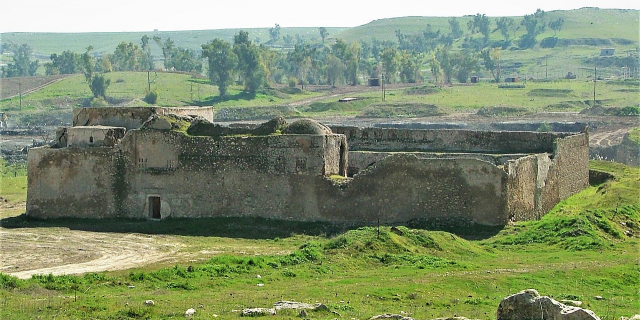


















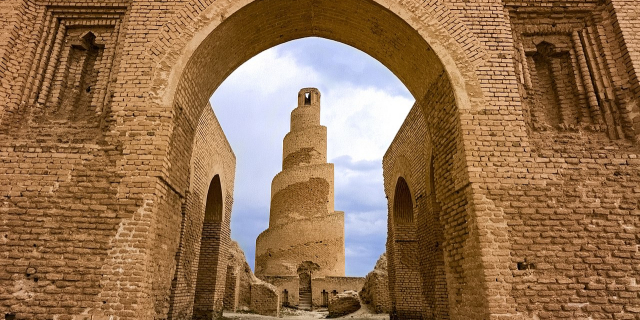



Add new comment